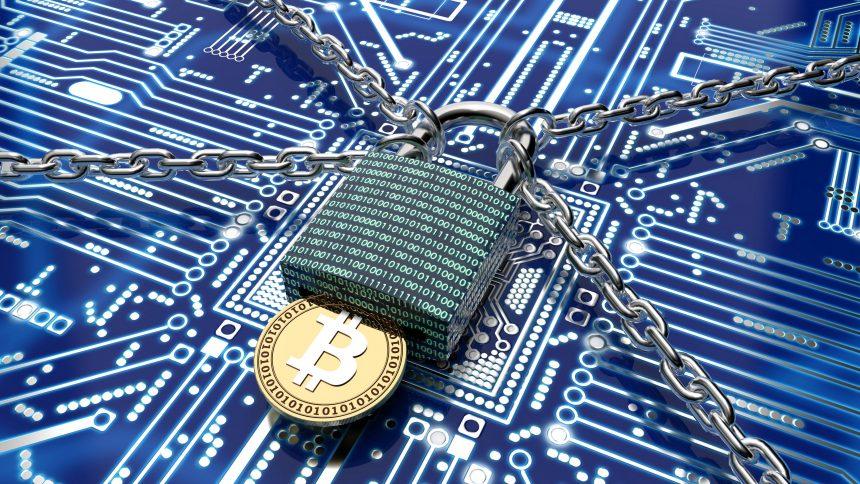Ransomware is a form of malicious software (malware) that cybercriminals use to extort money from victims. It infiltrates a computer system, encrypts the victim’s files, and demands a ransom payment in exchange for the decryption key needed to restore access. This type of malware has become increasingly prevalent, affecting both individuals and organizations, leading to data loss, financial harm, and significant disruption.
What is Allarich Ransomware?
Allarich is a newly identified ransomware that follows the typical modus operandi of encrypting victims’ files and demanding payment for their recovery. Like other ransomware, Allarich infiltrates a system through various means, such as malicious email attachments, compromised websites, or bundled software downloads. Once it gains access, it executes its payload, beginning a chain of malicious activities designed to extort money from the user.
How Allarich Ransomware Operates
Installation Process
Allarich ransomware typically gets installed on a system through phishing emails containing malicious attachments or links. These emails often appear to be from legitimate sources, tricking users into downloading and opening the files. Alternatively, it may also be distributed via fake software updates or bundled with other seemingly harmless software. Once the malicious file is executed, Allarich installs itself on the victim’s computer, embedding itself deep within the system.
Actions Performed After Installation
After installation, Allarich ransomware scans the system for files to encrypt. It targets a wide range of file types, including documents, images, videos, databases, and more, ensuring that the victim is significantly impacted by the encryption. The ransomware then uses a strong encryption algorithm to lock these files, appending a specific file extension to the affected files, such as “.allarich.”
For example, a file named “document.docx” would be renamed to “document.docx.allarich” after encryption, rendering it inaccessible without the decryption key.
Consequences
The primary consequence of Allarich ransomware is the loss of access to important files. The victim is then presented with a ransom note, typically a text file, explaining that their files have been encrypted and providing instructions on how to pay the ransom in exchange for the decryption key. The note may also warn against attempting to decrypt the files using third-party software or contacting law enforcement, threatening to delete the decryption key if the instructions are not followed.
Ransom Note Details
The ransom note left by Allarich ransomware usually contains the following elements:
- Notification of Encryption: A clear message stating that the victim’s files have been encrypted.
- Payment Instructions: Details on how to pay the ransom, typically in cryptocurrency like Bitcoin, to maintain the anonymity of the attacker.
- Decryption Instructions: Directions on how to contact the attackers and obtain the decryption key after payment is made.
- Threats: Warnings against attempting data recovery using third-party tools or ignoring the ransom demand, with threats of data destruction or increased ransom.
Text presented in this message:
The price depends on how quickly you write to us.
Email address!
plingplong@mail.com
Honesty is our principle
Attention.
Decrypting your files with the help of a third party may result in a price increase.
Do not attempt to decrypt your data!
Please do not!
Symptoms of Allarich Ransomware Infection
If your system is infected with Allarich ransomware, you may notice the following symptoms:
- File Extensions Changed: Files will have the “.allarich” extension appended to them, indicating they have been encrypted.
- Inaccessibility of Files: You will be unable to open or access your files, as they are locked by the ransomware.
- Ransom Note Presence: A ransom note (usually in the form of a text file) will be present on your desktop or in various folders, demanding payment for file decryption.
- Slow System Performance: The system might slow down due to the malicious activities running in the background.
- Unusual Network Activity: If the ransomware is communicating with a remote server, you might notice unusual outgoing network traffic.
Detection Names for Allarich Ransomware
To confirm whether your system is infected with Allarich ransomware, you can look for the following detection names used by various antivirus programs:
- Trojan-Ransom.Win32.Allarich
- Ransom:Win32/Allarich.A
- Ransom_Allarich.A
- Win32/Filecoder.Allarich
Similar Threats
Allarich is part of a broader category of ransomware that includes other similar threats. Some related ransomware families you might encounter include:
- Sodinokibi (REvil): Known for targeting high-profile organizations and demanding large ransoms.
- LockBit: Another ransomware strain that encrypts files and demands payment, often spreading via phishing campaigns.
- Maze: Not only encrypts files but also threatens to release sensitive data publicly if the ransom is not paid.
Comprehensive Removal Guide for Allarich Ransomware
If you suspect your system is infected with Allarich ransomware, follow these detailed steps to remove it:
- Isolate the Infected Device: Immediately disconnect the infected computer from the internet and any network connections to prevent the ransomware from spreading to other devices.
- Boot in Safe Mode: Restart your computer and press F8 before Windows starts loading. Select “Safe Mode with Networking” to boot the system with minimal drivers and services running.
- Use a Trusted Anti-Malware Tool: Download and install SpyHunter. Perform a full system scan to detect and remove Allarich ransomware and any associated malware components.
- Remove Malicious Files and Registry Entries: After the scan, follow the instructions provided by the anti-malware tool to remove the detected threats. This may include deleting malicious files and cleaning up infected registry entries.
- Restore Files from Backup: If you have a recent backup of your files, restore them from the backup. Ensure the backup is clean and not connected to the infected system before the ransomware removal.
- Use Data Recovery Software: If you don’t have a backup, you can try using data recovery software to retrieve your encrypted files, although this may not be effective if the encryption is strong.
- Seek Professional Help: If you are unable to remove the ransomware or recover your files, consider seeking help from a professional IT service.
Preventing Future Infections
To protect your system from ransomware like Allarich, follow these best practices:
- Regular Backups: Always keep your files backed up on an external drive or cloud storage. Ensure the backup is not connected to your computer to avoid encryption by ransomware.
- Be Cautious with Emails: Avoid opening attachments or clicking links in unsolicited emails, especially from unknown senders.
- Keep Software Updated: Regularly update your operating system and all software to patch vulnerabilities that ransomware might exploit.
- Use Strong Security Software: Install and maintain reliable antivirus and anti-malware software, such as SpyHunter, to provide real-time protection against threats.
- Educate Yourself and Others: Awareness is key. Educate yourself and your team about the dangers of ransomware and safe online practices.
Conclusion
Allarich ransomware is a dangerous threat that can cause significant harm by encrypting your files and demanding a ransom. Prompt detection and removal are essential to minimize damage. By following the detailed removal guide above and implementing preventive measures, you can protect your system from ransomware and other types of malware. Remember to download and use SpyHunter to scan your computer and keep it safe from such threats.
If you are still having trouble, consider contacting remote technical support options.





